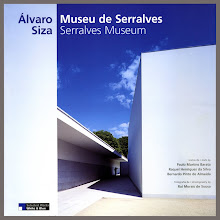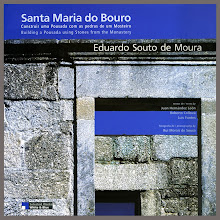...

I wish to make a post about Professional Interior Photography. In my opinion, it is one of the most difficult subjects to master. You often have to deal with very confined places, exposure times can be very long, and it is expectable that you will be confronted with a variety of light sources that make it very hard to find an acceptable filtration to give a "neutral" look to the images.
Very often those same light sources are a big challenge to your optical system, as they can produce a lot of flare and ghost images on your photographs, and you need to be very carefull on where to position your camera to avoid those adversities. That, in turn, can produce a less interesting composition, or even distort a piece of furniture, etc., etc.
Now you might start to understand that I probably was right with my previous statement, and that it is mandatory to use equipment of very good quality if you wish to practice Interior Photography with a certain seriousness and competence.
If you shoot transparency film you must have a good collection of colour correction and colour compensating filters. Other specialized items, such as a Colour-Meter, can also be of great help. And of course, you shouldn't even attempt such a task without a very good and sturdy tripod.
Still, you will also benefit from your own experience, so that you are able to judge the readings of your instruments (Light-, and Colour-Meter), to decide for yourself the necessary adjustments to make to those readings. Most times you are dealing with situations that are well beyond the scope for wich instruments and films were designed for.
The choice of film type, or even brand, is also of crucial importance. Some emulsions just answer better to long exposures than others, some are better suited for some types of ilumination.
I particularly find it very difficult to get good results under fluorescent lights. We could call it without any hesitation the "photographers nightmare"!
I dare to say, that if most architects would have conscience of how hard it is to get a pleasant image of their wonderfull designs under such light, they would just banish it forever from their works.
After all, they do wish their works to look great on the pages of all that nice shining magazines, or am I wrong on this one?
Very often those same light sources are a big challenge to your optical system, as they can produce a lot of flare and ghost images on your photographs, and you need to be very carefull on where to position your camera to avoid those adversities. That, in turn, can produce a less interesting composition, or even distort a piece of furniture, etc., etc.
Now you might start to understand that I probably was right with my previous statement, and that it is mandatory to use equipment of very good quality if you wish to practice Interior Photography with a certain seriousness and competence.
If you shoot transparency film you must have a good collection of colour correction and colour compensating filters. Other specialized items, such as a Colour-Meter, can also be of great help. And of course, you shouldn't even attempt such a task without a very good and sturdy tripod.
Still, you will also benefit from your own experience, so that you are able to judge the readings of your instruments (Light-, and Colour-Meter), to decide for yourself the necessary adjustments to make to those readings. Most times you are dealing with situations that are well beyond the scope for wich instruments and films were designed for.
The choice of film type, or even brand, is also of crucial importance. Some emulsions just answer better to long exposures than others, some are better suited for some types of ilumination.
I particularly find it very difficult to get good results under fluorescent lights. We could call it without any hesitation the "photographers nightmare"!
I dare to say, that if most architects would have conscience of how hard it is to get a pleasant image of their wonderfull designs under such light, they would just banish it forever from their works.
After all, they do wish their works to look great on the pages of all that nice shining magazines, or am I wrong on this one?

Maria José Salavisa was a very well known interior architect and designer.
When I first got to know her, I found her to be a very elegant lady, already of a certain age, but still taking great care of her appearance. She was always dressing beautifully, with lots of very well applied make-up. She was very polite, but very sure of herself and of what she wanted.
Every once in a while, she would call and ask if I wished to photograph a work of her. She than came to the meeting accompanied by not less then two or three always-very-nice and very-good-looking female assistants. Her chauffeur would keep a respectfull distance, always paying attention to her wishes.
And I would always be there, yes I confess, feeling a little funny, looking for the best words to say, trying not to be excessively shy and silly, trying not to look very intimidated.
I certainly enjoyed the respect and deference with wich all these nice ladies treated me, but I could never help myself but have plain conscience that we belonged to very different worlds, for each and every second we were face to face.
Then finally, they would jump in the limousine smiling and fading away, while I stood there waving good-buy and feeling a certain kind of relief.
After all it was nice to be alone with my cameras again...
Sadly, Maria José Salavisa passed away on the 12th January, 2006.
She was eighty years old. She is buried in Óbidos.



For this post on Interior Photography, I deliberately choose to display some photographs that possess all the difficulties that I talked about on the lines above: mixed light sources, high contrast, light sources shining directly toward the lens, relatively small area,etc.
Somehow, I modestly think that I managed to make some pleasant images of this Hockey Caffé, that you can visit in the nice town of Sintra, just near to the Palácio da Vila. Not far away from Lisbon.
I lived for a couple of years, in a small village near Sintra, so I can honestly say that Sintra is well worth a visit: one of the nicest towns in Portugal.

The photographs of Hockey Caffé were made using one of the most interesting and unusual relatively-compact cameras that I happen to own and use professionaly: Corfield WA 67.
As a matter of fact, I think that it would be very hard to find a camera better suited for the task.
I know that it might sound a little strange to hear such a statement: maybe sounds so silly like saying "Jimi Hendrix, or Eric Clapton, or someone else, is the best guitar player in the world"...
I really dislike such statements!
I know why I really dig my "Cory", but I will leave that for later on.
It is three in the morning, my glass of wine is empty, and I need some sleep.
Good night, sleep tight!
As a matter of fact, I think that it would be very hard to find a camera better suited for the task.
I know that it might sound a little strange to hear such a statement: maybe sounds so silly like saying "Jimi Hendrix, or Eric Clapton, or someone else, is the best guitar player in the world"...
I really dislike such statements!
I know why I really dig my "Cory", but I will leave that for later on.
It is three in the morning, my glass of wine is empty, and I need some sleep.
Good night, sleep tight!
...

+copy.jpg)
+copy.jpg)
+copy.jpg)
+copy.jpg)
+copy.jpg)
+copy.jpg)
belas fotos Rui :)
ReplyDeleteinteriores é mto complicado sim senhor, concordo, nao só pela luz (em regra parcial ou integralmente artificial) mas também pela exigencia em termos de composicao
ab!
Obrigado Rui, fico contente por saber que por aqui vais aparecendo. Parabéns pela Canon. Calculo que seja do género da Yashica do meu pai que mostro no Photo Gear. Espero que lhe estejas a dar bom uso, e que ela corresponda.
ReplyDeleteLeica M2 é uma muito boa opção, concordo. A minha já tem 50 anitos... Mas depois falamos sobre isso.
Abraço, Rui
olá Rui. Espero que não se importe que publique as suas fotos da obra da Maria José Salavisa, no Hockey, no meu blog. Agora que conheço o su blog vou aparecendo sempre. Cheers
ReplyDeleteOlá António,
ReplyDeleteNão, não me importo e agradeço a atenção de me avisar.
Também já dei uma olhadela ao seu blog e achei muito interessante.
Voltarei, certamente, mais vezes.
Muito prazer,
Rui